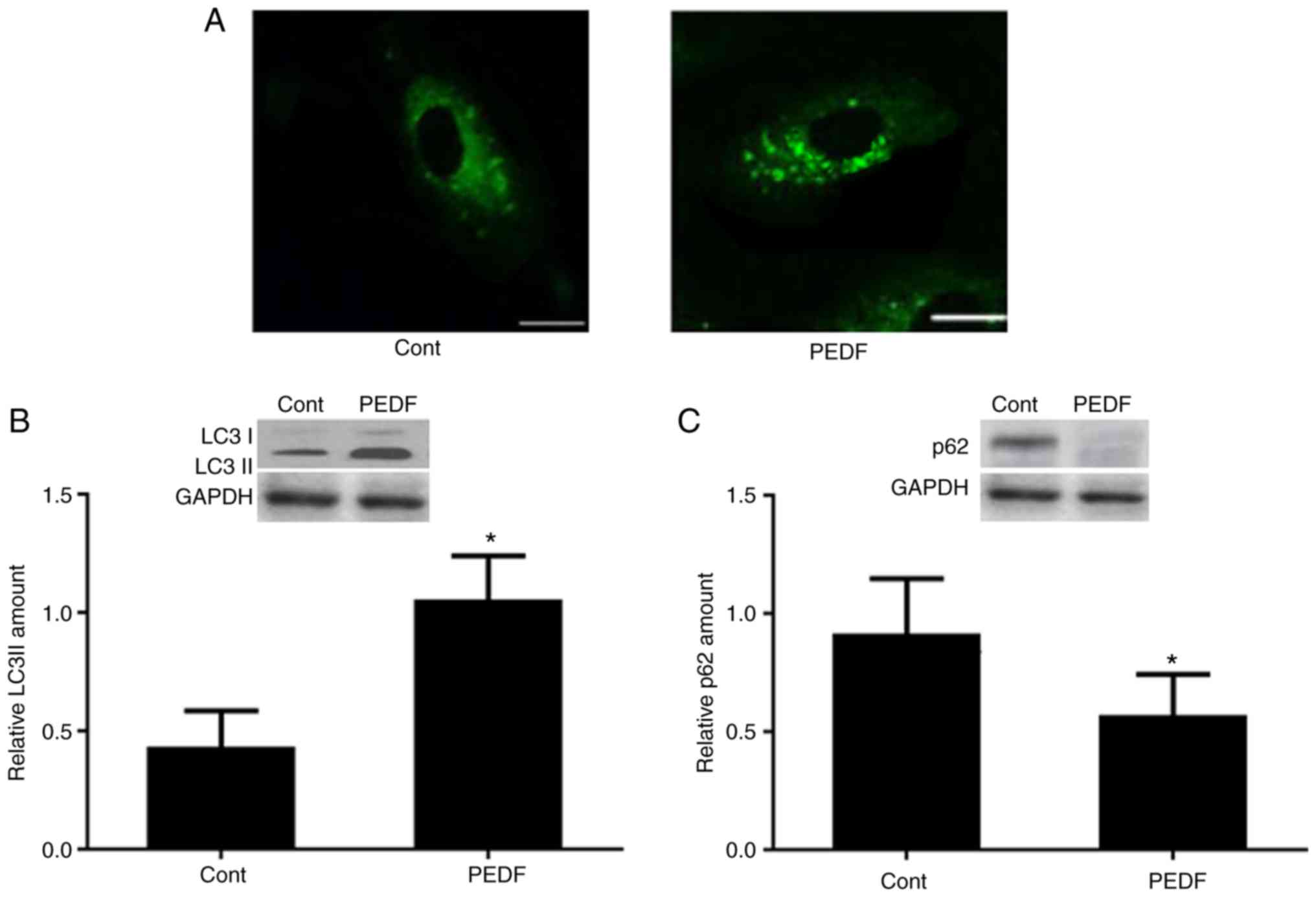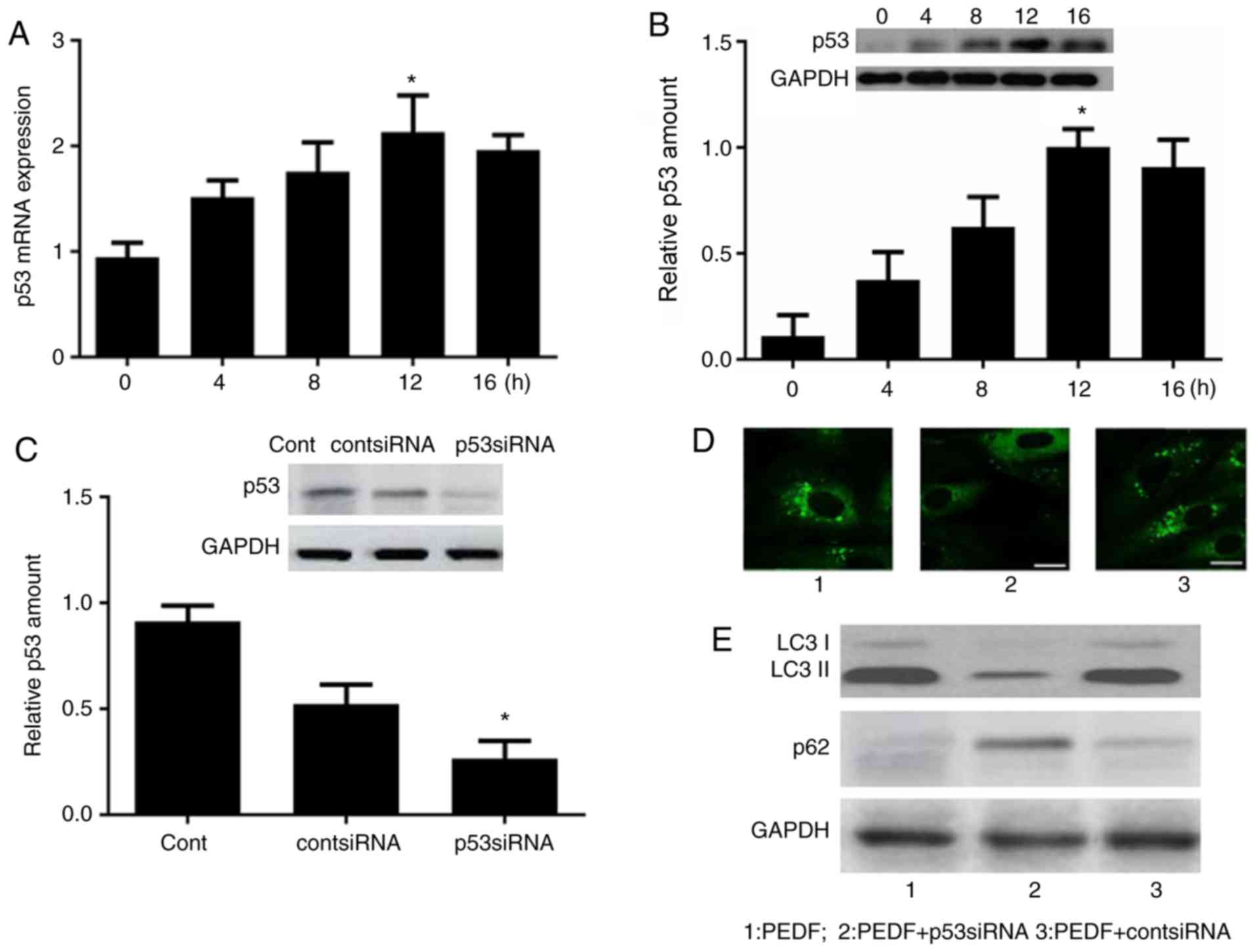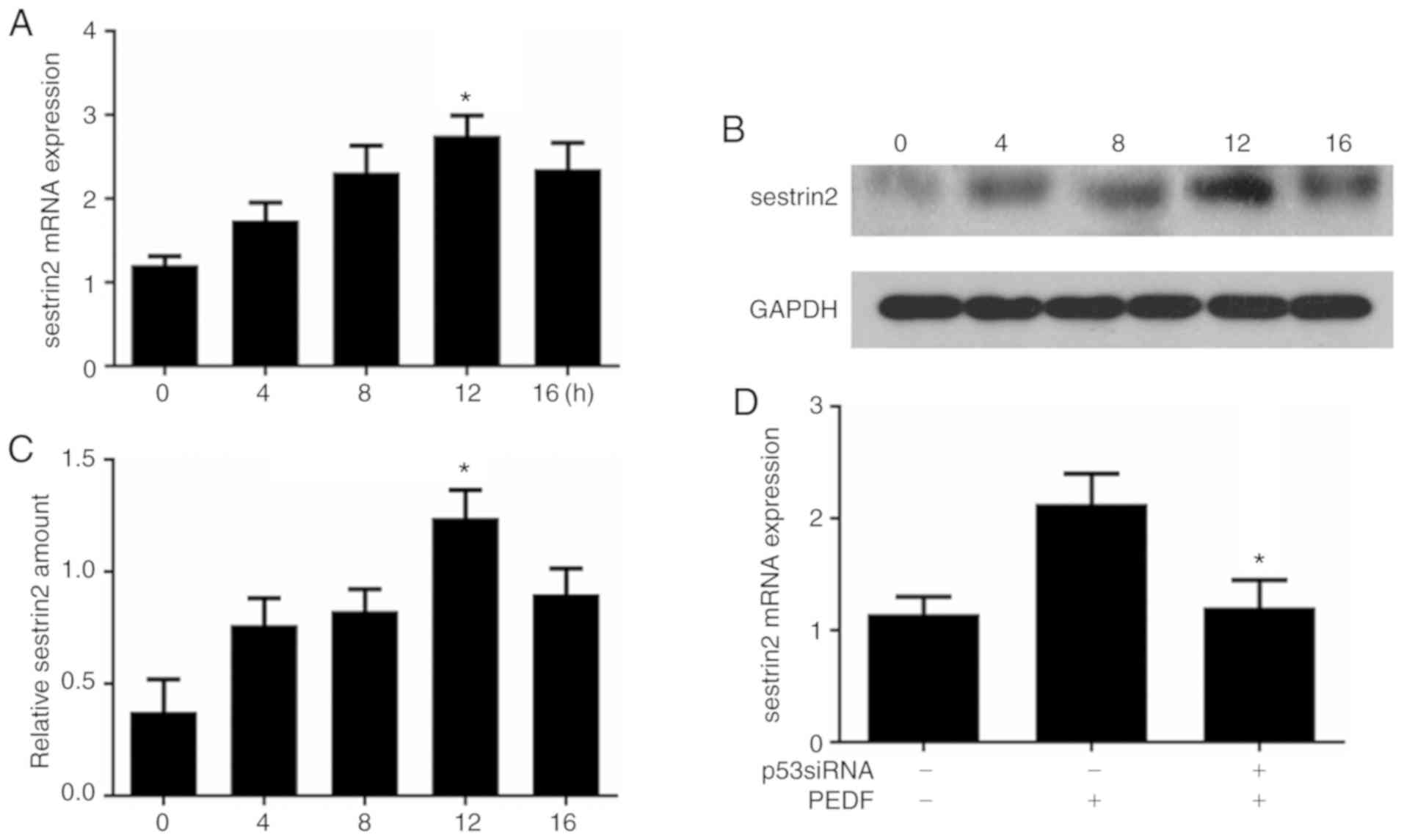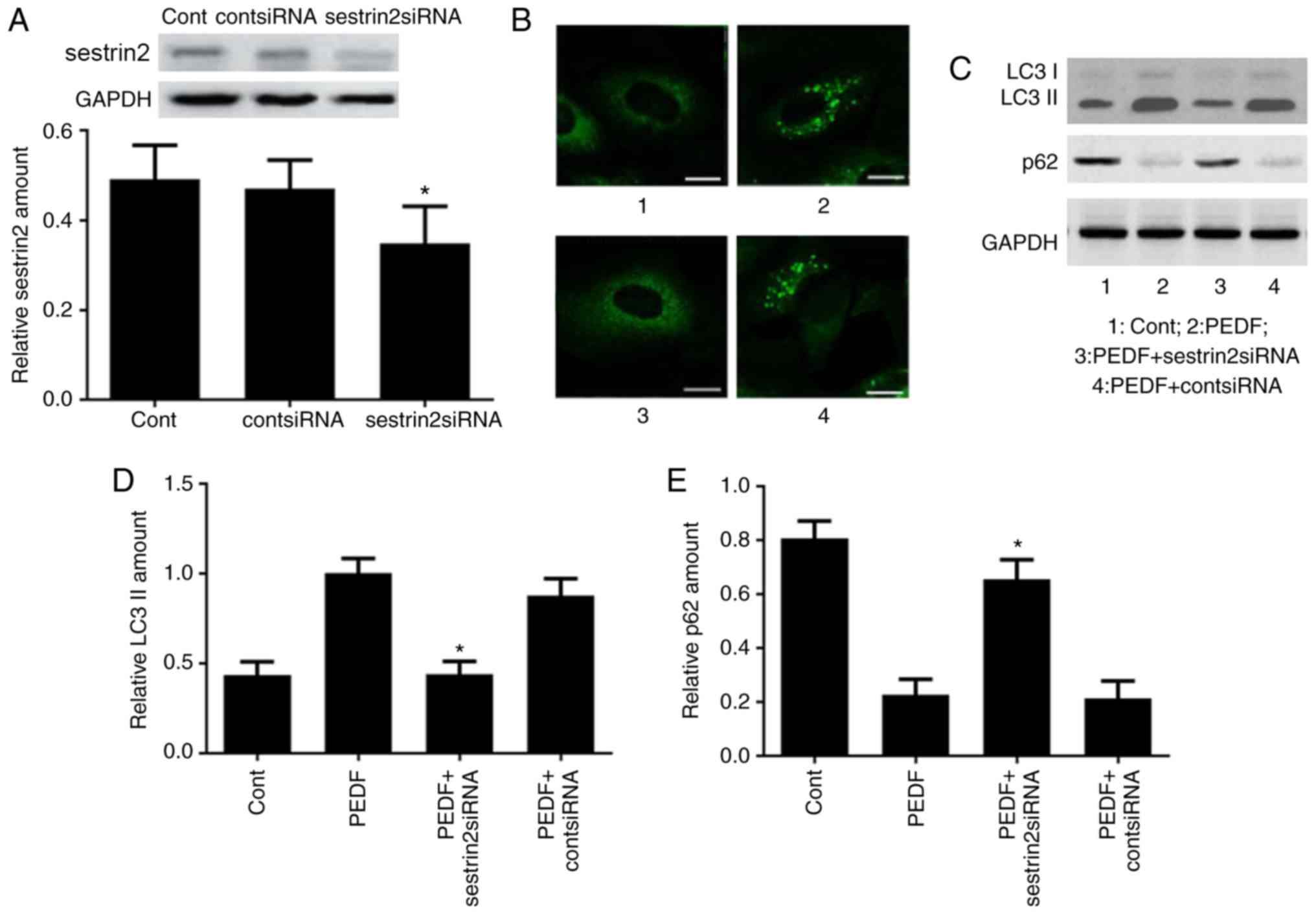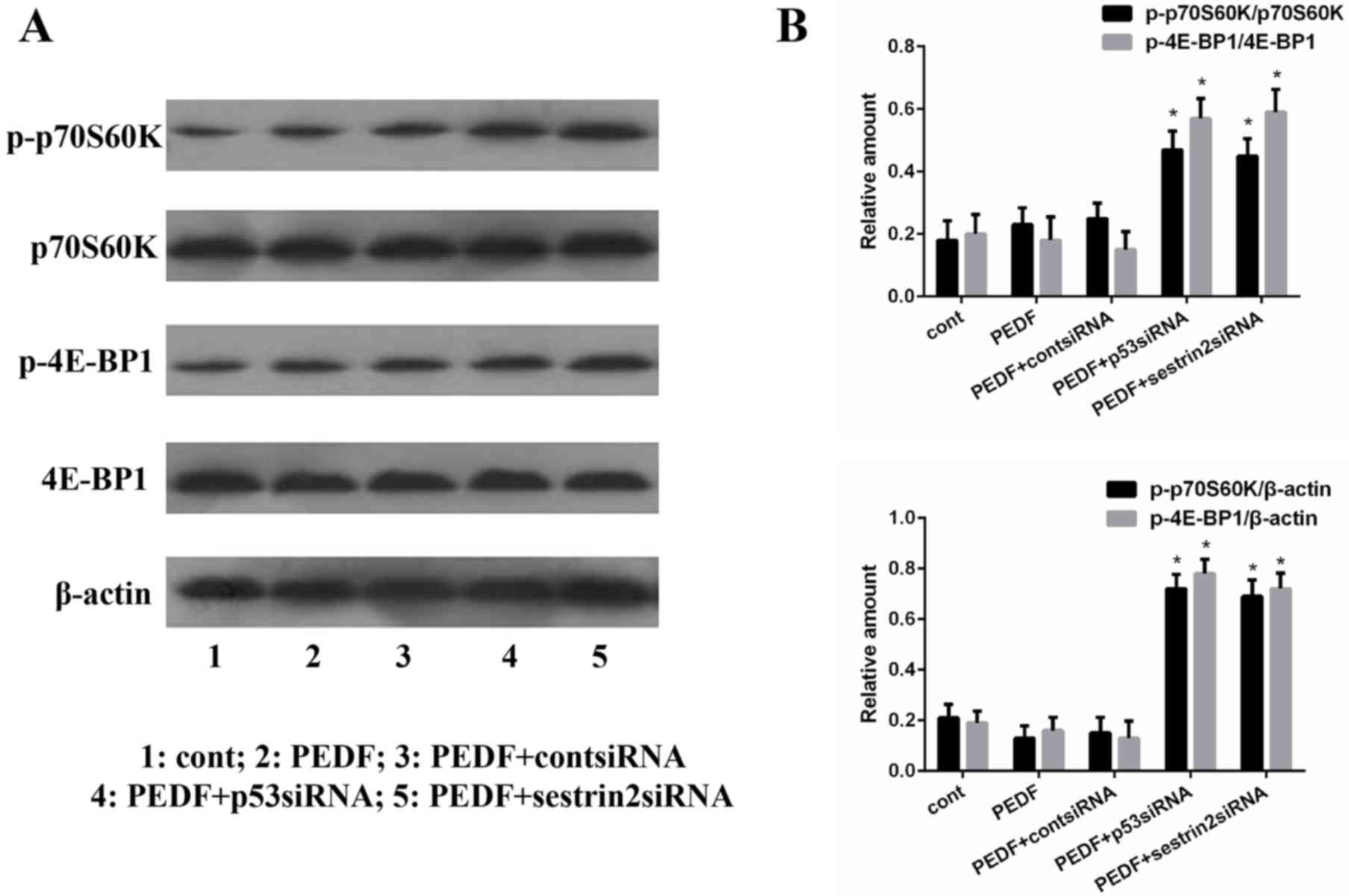|
1
|
Kozin SV, Duda DG, Munn LL and Jain RK:
Neovascularization after irradiation: What is the source of newly
formed vessels in recurring tumors? J Natl Cancer Inst.
104:899–905. 2012. View Article : Google Scholar : PubMed/NCBI
|
|
2
|
Small DM, Burden RE, Jaworski J, Hegarty
SM, Spence S, Burrows JF, McFarlane C, Kissenpfennig A, McCarthy
HO, Johnston JA, et al: Cathepsin S from both tumor and
tumor-associated cells promote cancer growth and
neovascularization. Int J Cancer. 133:2102–2112. 2013. View Article : Google Scholar : PubMed/NCBI
|
|
3
|
Lee S, Wurtzel JG, Singhal SS, Awasthi S
and Goldfinger LE: RALBP1/RLIP76 depletion in mice suppresses tumor
growth by inhibiting tumor neovascularization. Cancer Res.
72:5165–5173. 2012. View Article : Google Scholar : PubMed/NCBI
|
|
4
|
Yoshida GJ: Therapeutic strategies of drug
repositioning targeting autophagy to induce cancer cell death: From
pathophysiology to treatment. J Hematol Oncol. 10:672017.
View Article : Google Scholar : PubMed/NCBI
|
|
5
|
Stanton MJ, Dutta S, Zhang H, Polavaram
NS, Leontovich AA, Hönscheid P, Sinicrope FA, Tindall DJ, Muders MH
and Datta K: Autophagy control by the VEGF-c/NRP-2 axis in cancer
and its implication for treatment resistance. Cancer Res.
73:1602013. View Article : Google Scholar : PubMed/NCBI
|
|
6
|
Nguyen TM, Subramanian IV, Xiao X, Ghosh
G, Nguyen P, Kelekar A and Ramakrishnan S: Endostatin induces
autophagy in endothelial cells by modulating Beclin 1 and
beta-catenin levels. J Cell Mol Med. 13:3687–3698. 2009. View Article : Google Scholar : PubMed/NCBI
|
|
7
|
Becerra SP and Notario V: The effects of
PEDF on cancer biology: Mechanisms of action and therapeutic
potential. Nat Rev Cancer. 13:258–271. 2013. View Article : Google Scholar : PubMed/NCBI
|
|
8
|
Elahy M, Baindur-Hudson S, Cruzat VF,
Newsholme P and Dass CR: Mechanisms of PEDF-mediated protection
against reactive oxygen species damage in diabetic retinopathy and
neuropathy. J Endocrinol. 222:R129–R139. 2014. View Article : Google Scholar : PubMed/NCBI
|
|
9
|
Nwani NG, Deguiz ML, Jimenez B, Vinokour
E, Dubrovskyi O, Ugolkov A, Mazar AP and Volpert OV: Melanoma cells
block PEDF production in fibroblasts to induce the tumor-promoting
phenotype of cancer-associated fibroblasts. Cancer Res.
76:2265–2276. 2016. View Article : Google Scholar : PubMed/NCBI
|
|
10
|
Fujimura T, Yamagishi S, Ueda S, Fukami K,
Shibata R, Matsumoto Y, Kaida Y, Hayashida A, Koike K, Matsui T, et
al: Administration of pigment epithelium-derived factor, (PEDF)
reduces proteinuria by suppressing decreased nephrin and increased
VEGF expression in the glomeruli of adriamycin-injected rats.
Nephrol Dial Transplant. 24:1397–1406. 2008. View Article : Google Scholar : PubMed/NCBI
|
|
11
|
Zhang H, Wei T, Jiang X, Li Z, Cui H, Pan
J, Zhuang W, Sun T, Liu Z, Zhang Z and Dong H: PEDF and 34-mer
inhibit angiogenesis in the heart by inducing tip cells apoptosis
via up-regulating PPAR-γ to increase surface FasL. Apoptosis.
21:60–68. 2016. View Article : Google Scholar : PubMed/NCBI
|
|
12
|
Gao Q, Zhu X, Chen J, Mao C, Zhang L and
Xu Z: Upregulation of P53 promoted G1 arrest and apoptosis in human
umbilical cord vein endothelial cells from preeclampsia. J
Hypertens. 34:1380–1388. 2016. View Article : Google Scholar : PubMed/NCBI
|
|
13
|
Yang A, Rajeshkumar NV, Wang X, Yabuuchi
S, Alexander BM, Chu GC, Von Hoff DD, Maitra A and Kimmelman AC:
Kimmelman, Autophagy is critical for pancreatic tumor growth and
progression in tumors with p53 alterations. Cancer Discov.
4:905–913. 2014. View Article : Google Scholar : PubMed/NCBI
|
|
14
|
Mrakovcic M and Fröhlich LF: p53-mediated
molecular control of autophagy in tumor cells. Biomolecules.
8:E142018. View Article : Google Scholar : PubMed/NCBI
|
|
15
|
Shi J, Xiao H, Li J, Zhang J, Li Y, Zhang
J, Wang X, Bai X, Tao K, Hu D and Guan H: Wild-type p53-modulated
autophagy and autophagic fibroblast apoptosis inhibit hypertrophic
scar formation. Lab Invest. 98:1423–1437. 2018. View Article : Google Scholar : PubMed/NCBI
|
|
16
|
Wang N, Pan W, Zhu M, Zhang M, Hao X,
Liang G and Feng Y: Fangchinoline induces autophagic cell death via
p53/sestrin2/AMPK signalling in human hepatocellular carcinoma
cells. Br J Pharmacol. 164:731–742. 2011. View Article : Google Scholar : PubMed/NCBI
|
|
17
|
Maiuri MC, Malik SA, Morselli E, Kepp O,
Criollo A, Mouchel PL, Carnuccio R and Kroemer G: Stimulation of
autophagy by the p53 target gene Sestrin2. Cell Cycle. 8:1571–1576.
2009. View Article : Google Scholar : PubMed/NCBI
|
|
18
|
D'Amelio M and Cecconi F: A novel player
in the p53-mediated autophagy: Sestrin2. Cell Cycle.
8:14672009.
|
|
19
|
Livak KJ and Schmittgen TD: Analysis of
relative gene expression data using real-time quantitative PCR and
the 2(-Delta Delta C(T)) method. Methods. 25:402–408. 2001.
View Article : Google Scholar : PubMed/NCBI
|
|
20
|
Ho TC, Chen SL, Yang YC, Liao CL, Cheng HC
and Tsao YP: PEDF induces p53-mediated apoptosis through PPAR gamma
signaling in human umbilical vein endothelial cells. Cardiovasc
Res. 76:213–223. 2007. View Article : Google Scholar : PubMed/NCBI
|
|
21
|
Sumitomo Y, Koya J, Nakazaki K, Kataoka K,
Tsuruta-Kishino T, Morita K, Sato T and Kurokawa M: Cytoprotective
autophagy maintains leukemia-initiating cells in murine myeloid
leukemia. Blood. 128:1614–1624. 2016. View Article : Google Scholar : PubMed/NCBI
|
|
22
|
Miao L, Dong Y, Zhou FB, Chang YL, Suo ZG
and Ding HQ: Protective effect of tauroursodeoxycholic acid on the
autophagy of nerve cells in rats with acute spinal cord injury. Eur
Rev Med Pharmacol Sci. 22:1133–1141. 2018.PubMed/NCBI
|
|
23
|
Chen J, Zhu Y, Zhang W, Peng X, Zhou J, Li
F, Han B, Liu X, Ou Y and Yu X: Delphinidin induced protective
autophagy via mTOR pathway suppression and AMPK pathway activation
in HER-2 positive breast cancer cells. BMC Cancer. 18:3422018.
View Article : Google Scholar : PubMed/NCBI
|
|
24
|
Ellis M, Stern O and Ashur-Fabian O: The
double benefit of Spalax p53: Surviving underground hypoxia while
defying lung cancer cells in vitro via autophagy and
caspase-dependent cell death. Oncotarget. 7:63242–63251. 2016.
View Article : Google Scholar : PubMed/NCBI
|
|
25
|
Jakhar R, Paul S, Bhardwaj M and Kang SC:
Astemizole-Histamine induces Beclin-1-independent autophagy by
targeting p53-dependent crosstalk between autophagy and apoptosis.
Cancer Lett. 372:89–100. 2015. View Article : Google Scholar : PubMed/NCBI
|
|
26
|
Haque E, Kamil M, Irfan S, Sheikh S, Hasan
A, Nazir A and Mir SS: Blocking mutation independent p53
aggregation by emodin modulates autophagic cell death pathway in
lung cancer. Int J Biochem Cell Biol. 96:90–95. 2018. View Article : Google Scholar : PubMed/NCBI
|
|
27
|
Liu D, Li R, Guo X, Pang L, Zang Y, Liu K
and Chen D: Chen, DNA damage regulated autophagy modulator 1
recovers the function of apoptosis-stimulating of p53 protein 2 on
inducing apoptotic cell death in Huh7.5 cells. Oncol Lett.
15:9333–9328. 2018.PubMed/NCBI
|
|
28
|
Zhang QY, Jin R, Zhang X, Sheng JP, Yu F,
Tan RX, Pan Y, Huang JJ and Kong LD: The putative oncotarget CSN5
controls a transcription-uncorrelated p53-mediated autophagy
implicated in cancer cell survival under curcumin treatment.
Oncotarget. 7:69688–69702. 2016.PubMed/NCBI
|
|
29
|
Budanov AV and Karin M: p53 target genes
sestrin1 and sestrin2 connect genotoxic stress and mTOR signaling.
Cell. 134:451–460. 2008. View Article : Google Scholar : PubMed/NCBI
|
|
30
|
Jayaraj P, Sen S, Rangarajan S, Ray N,
Vasu K, Singh VK, Phartyal R, Yadav S and Verma A:
Immunohistochemical evaluation of stress-responsive protein
sestrin2 and its correlation with p53 mutational status in eyelid
sebaceous gland carcinoma. Br J Ophthalmol. 102:848–854. 2018.
View Article : Google Scholar : PubMed/NCBI
|
|
31
|
Wang N, Zhang Q, Luo L, Ning B and Fang Y:
β-asarone inhibited cell growth and promoted autophagy via
P53/Bcl-2/Bclin-1 and P53/AMPK/mTOR pathways in Human Glioma U251
cells. J Cell Physiol. 233:2434–2443. 2018. View Article : Google Scholar : PubMed/NCBI
|
|
32
|
Kassem L and Abdel-Rahman O: Targeting
mTOR pathway in gynecological malignancies: Biological rationale
and systematic review of published data. Crit Rev Oncol Hematol.
108:1–12. 2016. View Article : Google Scholar : PubMed/NCBI
|
|
33
|
Saxton RA and Sabatini DM: mTOR signaling
in growth, metabolism, and disease. Cell. 168:960–976. 2017.
View Article : Google Scholar : PubMed/NCBI
|
|
34
|
Munson MJ and Ganley IG: MTOR, PIK3C3 and
autophagy: Signaling the beginning from the end. Autophagy.
11:2375–2376. 2015. View Article : Google Scholar : PubMed/NCBI
|















